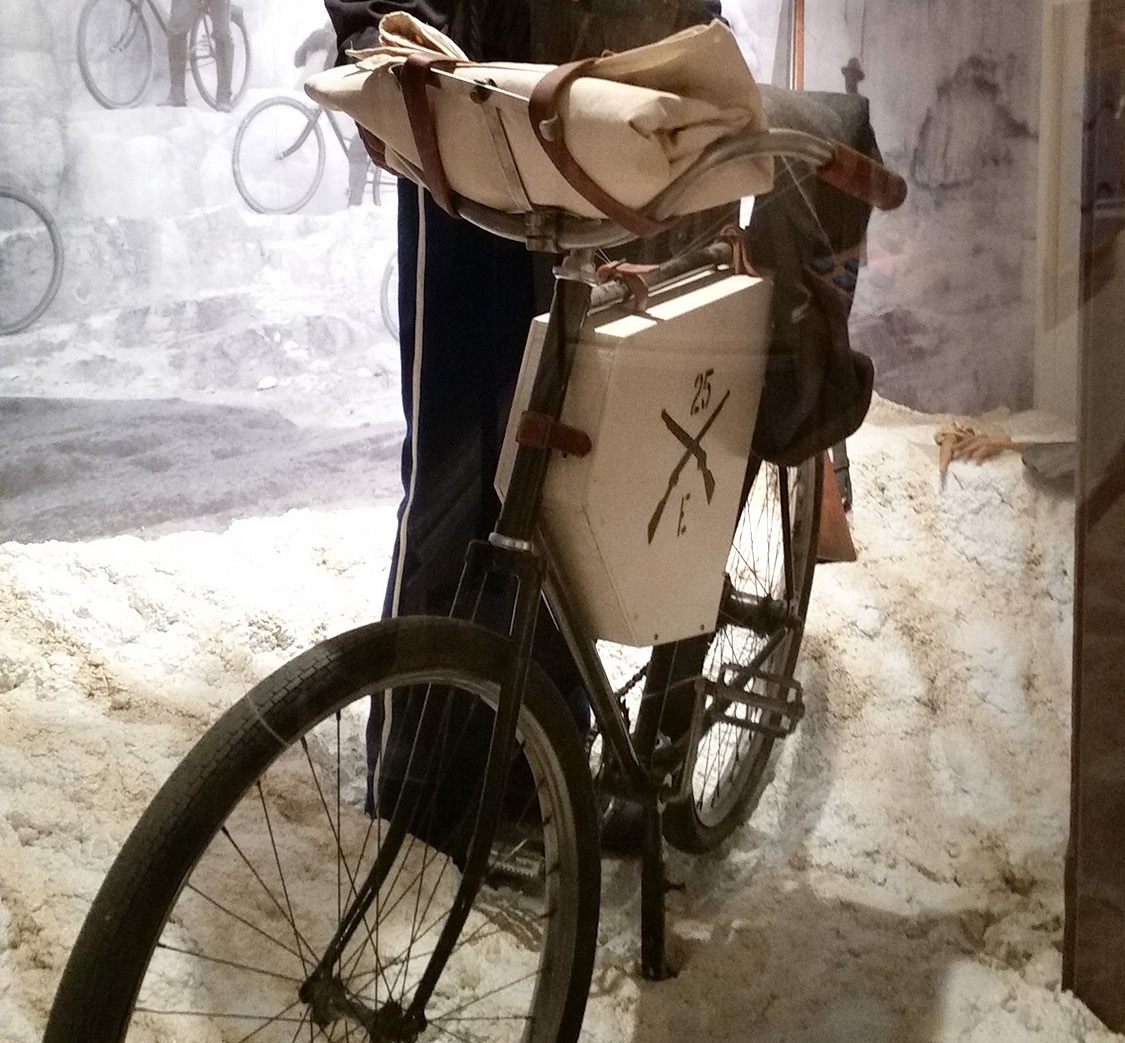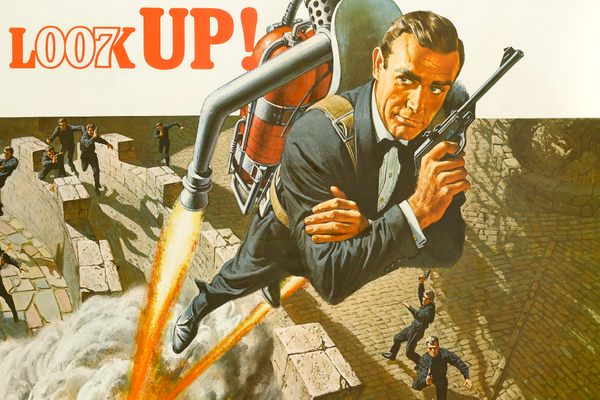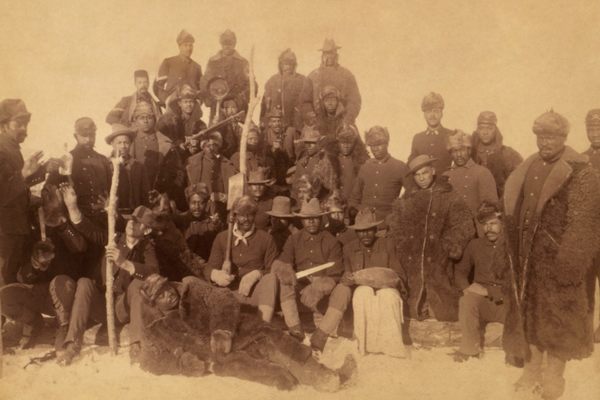America’s Short-Lived ‘Black Army on Wheels’
The existence of the 25th Infantry Bicycle Corps, the first U.S. experiment with military bicycles, was brief and uncomfortable.

Militaries across the globe have dabbled in the use of bicycles as part of their arsenal. Nations including Germany, Sweden, and Japan have all employed regiments of bicycle cavalry at one point or another, but most were only used for a short time. In the United States, after a single, hellish, 1,900-mile ride in 1897, the idea of a permanent bicycle infantry was more or less permanently shelved.
The U.S.’s first foray into military cycling was the brainchild of Major General Nelson A. Miles, a proponent of modernization in the armed forces during the late 1800s. In an 1894 newspaper article in The Outlook, Miles expressed his enthusiasm for military bicycles, saying, “There is no doubt in my mind that during the next great war the bicycle, with such modifications and adaptations as experience may suggest, will become a most important machine for military purposes.” In his view, the bicycle could be used for everything from simple courier work to troop and gear transport, and possibly even in combat.
Bikes seemed like a great alternative to the traditional horse, needing no food, water, or handlers, as well as being quieter and easier to conceal. But the bicycle was still an untested piece of military equipment. It had been employed by some U.S. militia groups, but still needed to be vetted in an official capacity. So in 1896, Second Lieutenant James A. Moss, an avid cyclist and fellow proponent of adding bikes to the military arsenal, was given the go-ahead to create the nation’s first bicycle corps.
Moss, having graduated dead last in his class from West Point, had been given what was seen as an undesirable post at the time, joining the all black “Buffalo Soldiers” of the 25th Infantry Regiment at Montana’s Fort Missoula. The 25th in Montana was mostly tasked with keeping the peace and building up the fort.

With the support of General Miles, Moss acquired a fleet of bicycles from the A.G. Spalding Company (precursor to Spalding sporting goods) as a donation to the Army. Moss worked with the company to modify the vehicles for military service. The bikes were outfitted with a canvas tent, sleeping bag, and blanket that rolled up and attached to the handlebars, and a hard shell case that fit into the space in the middle of the frame, for further storage. Fully equipped, the bikes weighed around 59 pounds, according to the account from the Fort Missoula Museum. Armed with 50 rounds each, the soldiers would carry their guns on their backs.
During the summer of 1896, Moss and members of the 25th Infantry began embarking on relatively short trips in the area, testing the bikes in rugged, rocky terrain. In August, Moss and a group of riders rode some 800 miles to Yellowstone National Park and back. In total, the trip took 23 days, and despite rotted tires and poor weather, Moss considered the trip a successful demonstration of the bicycle’s usefulness as a military vehicle.
Emboldened by these preliminary expeditions, Moss decided it was time for an even harder test, one that would solidify the usefulness of a bicycle corps. His grand plan was to take a group of riders almost 2,000 miles, from Fort Missoula to St. Louis, Missouri. As detailed in an excellent collection of articles and first-hand accounts of the trip on Mike Higgins’ blog about the 25th Bicycle Corps, Moss told the Daily Missoulian why he chose St. Louis as a destination, saying:
As the object of the trip is to test most thoroughly the bicycles as a means of transportation for troops, the route should be long and the geography of the country of such a nature as to afford all possible conditions. By selecting St. Louis as our objective, we have a long route with high and low altitudes; stoney roads of mountains; the hummock earth roads of South Dakota; the sandy roads of Nebraska and the clay roads of Missouri.
The terrain would be hard, and the trip would test the limits of the men’s will, but Moss figured that if the bicycle was going to be used in the field, it would need to hold up to anything they could put it through.

Thus on June 14, 1897, Moss and company set out for St. Louis. Moss was accompanied by 20 men from the 25th Infantry who had volunteered for the expedition; a surgeon who acted as his second-in-command; a reporter from the Daily Missoulian; and Sargent Mingo Sanders, the oldest in the group and the senior enlisted man who handled much of the day-to-day work during the expedition. After receiving a cheering farewell as they pedaled out of Missoula, things seemed to be off to a fine start, before almost immediately taking a turn.
The hardships began on the very first day as rain turned their route to mud, forcing the men to walk their bikes for much of the way through the “gumbo.” They were soaked, muddy, and tired. According to Moss’s report on the day, they averaged a total of 5.4 miles per hour. Despite the fact that much of the trip ended up being uphill, in general, things went downhill from there.
Over the next 40 days, Moss and the members of the 25th encountered flooded roads, snow, hail, sand, rocks that caused riders to crash, extreme heat and cold, and just about every other type of calamity Mother Nature could devise to throw at them. Walking and carrying their bikes was often as common as riding them. They also often had to resort to traveling over rail tracks that shook the men numb.
If slow progress wasn’t dispiriting enough, food and water was often scarce. The group was expected to cover 50-60 miles a day and only carried enough rations to cover the expected distance. Supplies were sent ahead to various points across the route, roughly 100 miles apart, but the slow going made it difficult to reach each of them on time, often leaving the group hungry.
During the back leg of the journey, temperatures sometimes reached over 100 degrees Fahrenheit going through South Dakota and Nebraska. The only available water was often found in railroad tanks, which would grow stagnant. Thus a number of expedition members became sick from the rotten water, delaying their trip even further.
Then there was the reaction of the people they passed. The sight of 20 black men riding bicycles through areas where neither was a common sight often caused bystanders to stare in bewilderment at best, and react with hostility at worst. Some of the farms they would pass through inquired whether the men were Union soldiers, telling them to get off their land.
Despite all of their hardships, Moss, Sanders, and the rest of the Bicycle Corps arrived in St. Louis on July 24, 1897, having lost just one man, whom Moss had sent back to Ft. Missoula due to his negative effect on morale. The group was greeted by a large crowd who came out to see them perform bicycle drills to commemorate their arrival.
Moss remained upbeat, noting that they ended up traveling much faster than they would have on horse, that many of the men actually got stronger from the work out, and that the trip had personally cost him just $43. But during their journey, any enthusiasm the Army had had waned. Moss wanted to continue on to St. Paul, Minnesota. His request was denied.
The Bicycle Corps returned to Ft. Missoula by rail, and was officially disbanded, the bikes sent back to the Spalding Company. Still, Moss, tried to get another expedition off the ground, this time to San Francisco, but no one was having it. The dream of the U.S. Bicycle Corps was dead.
With the ever-evolving nature of military technology, it’s unlikely that the Army will revisit a bicycle corp any time soon, but thanks to the epic journey of the 25th Infantry, at least we can say they tried.












Follow us on Twitter to get the latest on the world's hidden wonders.
Like us on Facebook to get the latest on the world's hidden wonders.
Follow us on Twitter Like us on Facebook